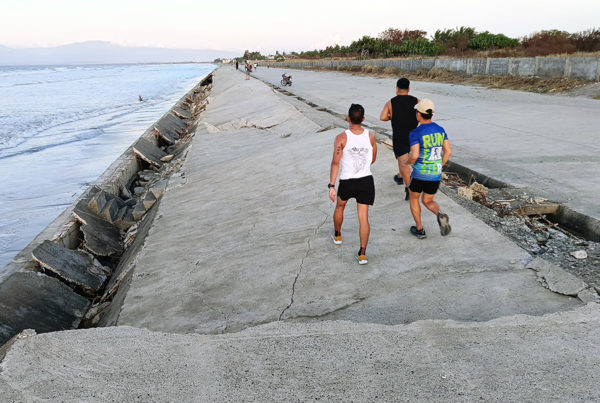Life in the dumps
IT’S filthy and smelly, but for years, decades even, it has been home to many families.
At the Dagupan City dumpsite, they have everything they need to live on — a house for the family, a source of livelihood and a community – everything, but really nothing.
For some 70 families in Dagupan, living in the dumpsite has been the only way of life they know.
Every day, every family member—the young children, their parents, and even the ailing elderly— would head out to the hill of garbage armed with sticks to scavenge, an activity they called ‘kalakal’.
Every piece of metal, bottle, plastic and paper, anything that can be sold, was worth taking and for which the combined stench of decaying animals, spoiled foods, human wastes, methane, and fumes of smoke was worth inhaling.
They dug thru that ‘goldmine’, protected only by handkerchiefs covering their mouths and noses, not from the stench — they have been used to it — but from the thousands of flies buzzing around.
It used to be that a single family could make up to P700 to P800 a day but not all days were the same; sometimes the dumpsite could be unforgiving.
If they don’t kalakal much to sell, the scavengers feed on leftovers they could find. They would eat this right at the dumpsite if the leftovers smelled fresh. If the leftovers smelled bad, these were brought home to be washed and refried before eating.
They called the leftovers ‘pagpag,’ referring to the way the leftovers are cleaned by shaking off the dirt.
“What caught my attention was seeing a child holding a plate in one hand while the other hand was rummaging thru a pile of garbage for food,” narrates city Waste Management Division (WMD) Chief Teddy Villamil Jr.
REHABILITATION
The WMD started rehabilitating the dumpsite two years ago, with the end goal of closing it in compliance with a law that requires the replacement of open dumps with a sanitary landfill facility.
At the start of the rehabilitation work, some of the residents resisted and went so far as to lay down pieces of wood with nails along the path of hauling trucks to puncture their tires and stop the operation.
Since the rehabilitation, almost two-third of the original area has been flattened and converted into an eco-tourism park.
Nowadays, a family at the dumpsite would be lucky to earn P150 from a day of scavenging.
But in its place, the scavengers will be soon be provided an alternative livelihood when the development eco-tourism park is completed.
Also, the city government has started the Balik Probinsiya Program that returns the scavengers back to their hometowns.
On January 3, four families have returned to General Santos City in South Cotabato.
However, since Dagupan City has no alternative sanitary landfill in sight, the dumpsite’s full closure is not likely happening soon. (The city lost its right to a 30-hectare area in San Jacinto town to land reform after paying P16 million).
But when it does, the remaining scavengers will have to find another place to live in. And hopefully, their new home will be one that is truly fit for human life. (PIA-Pangasinan/ Alex Fernandez)







